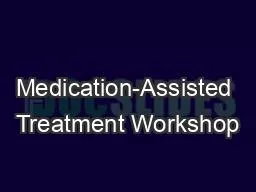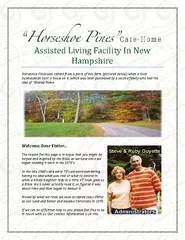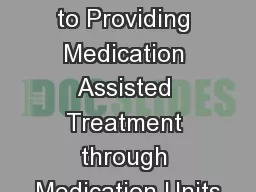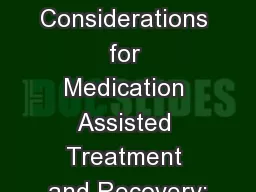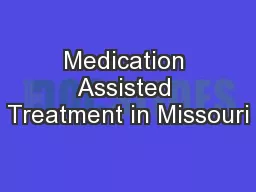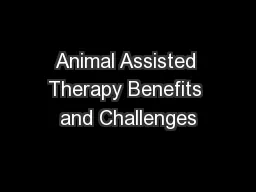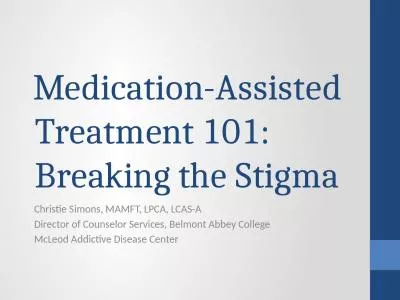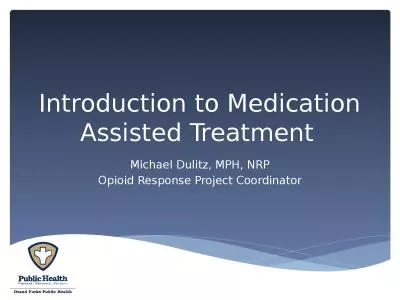PPT-Medication-Assisted Treatment Workshop
Author : partysilly | Published Date : 2020-08-26
Atlanta GA CDC NACCHO NaRCAD April 10 2019 Don Teater MD mph TEATER HEALTH SOLUTIONS 1 Disclosure Neither I nor any members of my immediate family have a financial
Presentation Embed Code
Download Presentation
Download Presentation The PPT/PDF document "Medication-Assisted Treatment Workshop" is the property of its rightful owner. Permission is granted to download and print the materials on this website for personal, non-commercial use only, and to display it on your personal computer provided you do not modify the materials and that you retain all copyright notices contained in the materials. By downloading content from our website, you accept the terms of this agreement.
Medication-Assisted Treatment Workshop: Transcript
Download Rules Of Document
"Medication-Assisted Treatment Workshop"The content belongs to its owner. You may download and print it for personal use, without modification, and keep all copyright notices. By downloading, you agree to these terms.
Related Documents

